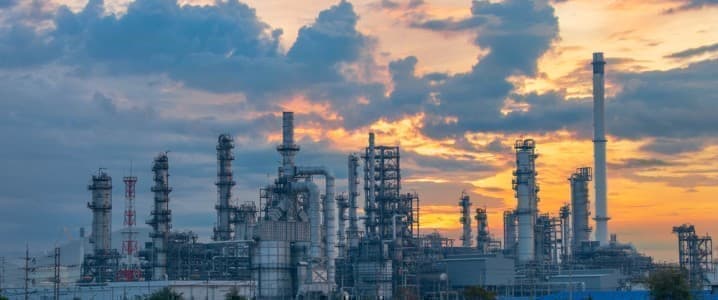A couple of days ago, we reported that Big Oil companies Exxon Mobil Corp.(NYSE:XOM) and Chevron Corp. (NYSE:CVX) were set to post huge profit declines mainly due to weaker oil and gas prices compared to a year ago. Analysts expect Exxon to post Q2 2023 earnings per share (EPS) of $2.04, a huge 50.4% drop from EPS of $4.14 in the second quarter of 2022. The company’s earnings dropped to about $7.8 billion from $17.85 in the year-ago quarter in large part due to lower natural gas prices and weaker oil refining margins. Its revenue is expected to decline 31.8% year-over-year from $115.68 billion to $78.85 billion.
Chevron is not expected to do much better, with the company telling investors earlier this week that it expects its 2Q earnings to drop by nearly 50% from the year-ago quarter. In the company’s preliminary 2Q results released Monday, Chevron said it expects to report a profit of $6 billion for the quarter, good for a 48.3% year-over-year decline although ahead of Wall Street expectations per a Bloomberg survey of $5.5 billion.
Well, it appears that low oil and gas prices are just some of the problems Big Oil has to contend with. It’s now emerging that their pivotal petrochemicals businesses will not save them, either. Sluggish consumer demand as well as a deluge of new factories coming online over the past few years means petrochemical margins face a protracted downturn. The situation is so dire that Cologne-based Lanxness AG has called it a “Lehman 2” moment for the chemicals industry.
“It’s been a pretty dramatic downturn. With chemicals oversupplied right now, large oil companies will find other areas to invest in,” Joseph Chang, a New York-based analyst at ICIS, has told Bloomberg.
Growth Engine
Over the past decade, Big Oil has relied on petrochemicals as a growth engine, acting as a hedge when oil and gas prices drop and a long-term growth driver in the transition to clean energy. Several Wall Street analysts have predicted that oil demand will actually grow over the coming decades primarily driven by petrochemicals demand growth.
Last year, the Energy Intelligence Group predicted that not only will oil demand grow in 2023 but it will continue doing so till the end of the decade. According to the analyst, global oil demand is expected to grow by 1.5 mb/d in 2023, with China accounting for 650,000 b/d after the country abandoned its rigorous zero-Covid policy. Global oil demand will hit 101.2 million barrels per day in the current year and will continue growing to hit 106 mb/d by 2030. Indeed, this year’s average is expected to exceed the previous high of 100.6 mb/d set in 2019.
While this is great news for the oil bulls, the expert says that growth will primarily be driven by petrochemicals rather than transport fuels. Energy Intelligence Group has also said that its base case is a plateau rather than a decline. Actually, Energy Intelligence is not the only bull here. No less than 10 organizations, including OPEC, Exxon Mobil, and the Energy Information Administration (EIA), have predicted that global oil demand will actually grow over the next few decades and not shrink as most analysts have forecast.
Unfortunately, Big Oil companies have gone for overkill, using petrochemicals to hedge their oil and gas bets. S&P Global has reported that a staggering 49.5 million tons of new ethylene capacity has or will come online globally from 2020 to 2024, outstripping projected demand by 55%. More than half has or will come from China as it looks to lower imports of chemicals key to its giant manufacturing industry.
New Energy
But all is not lost for Big Oil investors, with these companies now investing heavily in promising ‘New Energy’ technologies including renewable energy and carbon capture, utilization and storage (CCUS).
Carbon capture is one technology that has been proposed to limit global warming and climate change. Both the Intergovernmental Panel on Climate Change (IPCC) and International Energy Agency (IEA) consider carbon capture, utilization and storage (CCUS) an ideal solution for many hard-to-abate sectors such as aviation, hydrogen production and cement from fossil fuels.
Over the past few years, Big Oil firms have started investing heavily in CCUS: Exxon Mobil recently signed a long-term contract with industrial gas company Linde Plc. (NYSE:LIN) that involves offtake of carbon dioxide associated with Linde’s planned clean hydrogen project in Beaumont, Texas. Exxon will transport and permanently store as much as 2.2M metric tons/year of carbon dioxide each year from Linde’s plant.
Back in February, Linde unveiled plans to build a $1.8B complex which will include autothermal reforming with carbon capture and a large air separation plant to supply clean hydrogen and nitrogen. Last week, Exxon CEO Darren Woods told investors that the company’s Low Carbon business has the potential to outperform its legacy oil and gas business within a decade and generate hundreds of billions in revenues.
Meanwhile, Exxon’s oilfield services peer Schlumberger Ltd (NYSE:SLB) has created the SLB New Energy unit. SLB will invest in five key niches including carbon solutions, hydrogen, geothermal and geoenergy, energy storage and critical minerals, each with a minimum addressable market of $10B. Just like Exxon, Schlumberger has big dreams for its new business: CEO Rennick says SLB New Energy will hit $3 billion in revenues by the end of the current decade and at least $10 billion by 2030.
By Alex Kimani for Oilprice.com
More Top Reads From Oilprice.com:
- New Catalyst Synthesis Paves The Way For Next-Gen Lithium-Air Batteries
- China's Innovative Inroads Into Central Asia
- The Uncertain Future Of The OPEC+ Alliance



















Long $shell former Royal Dutch Shell strong buy. Long $IBM International Business Machines
Strong buy